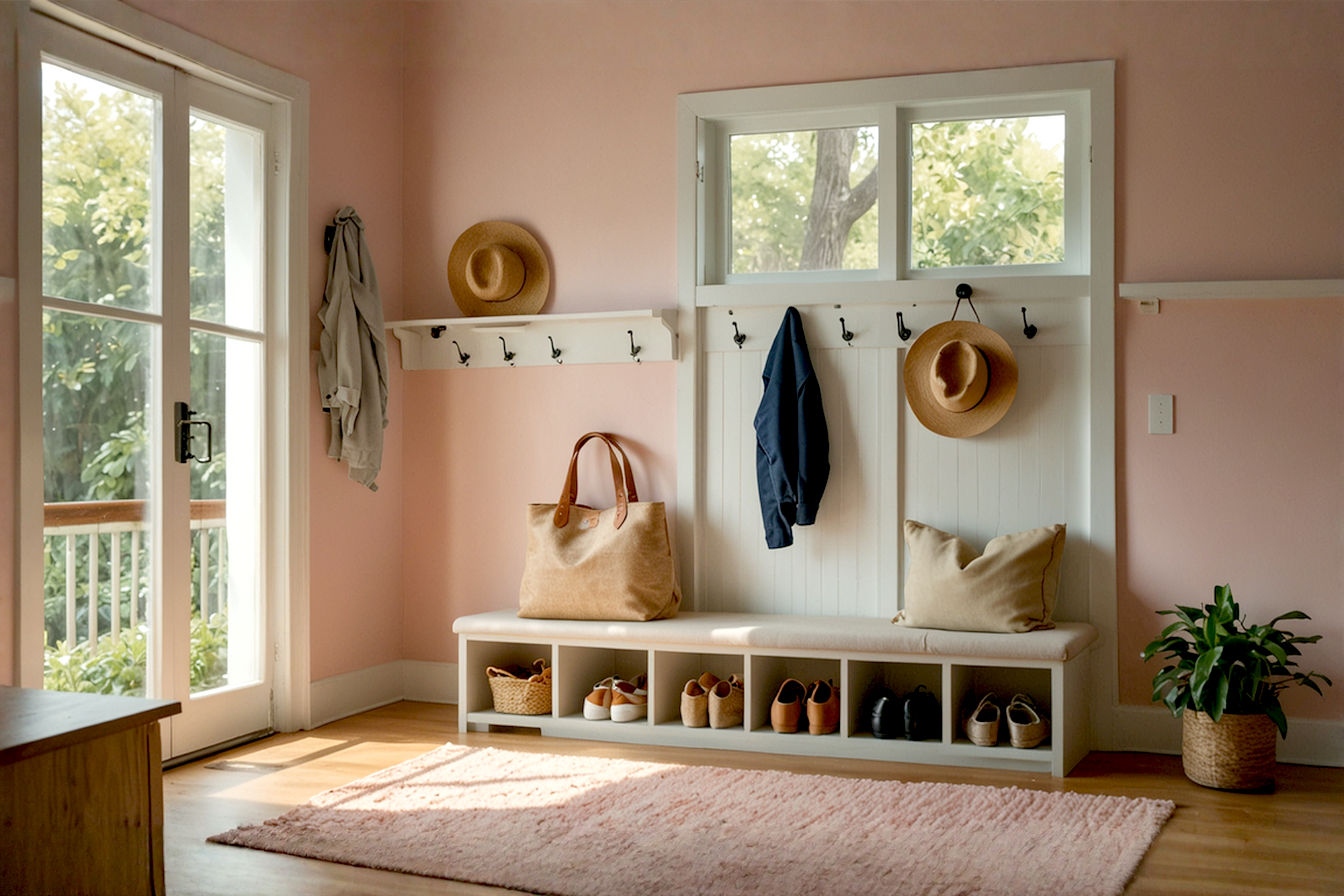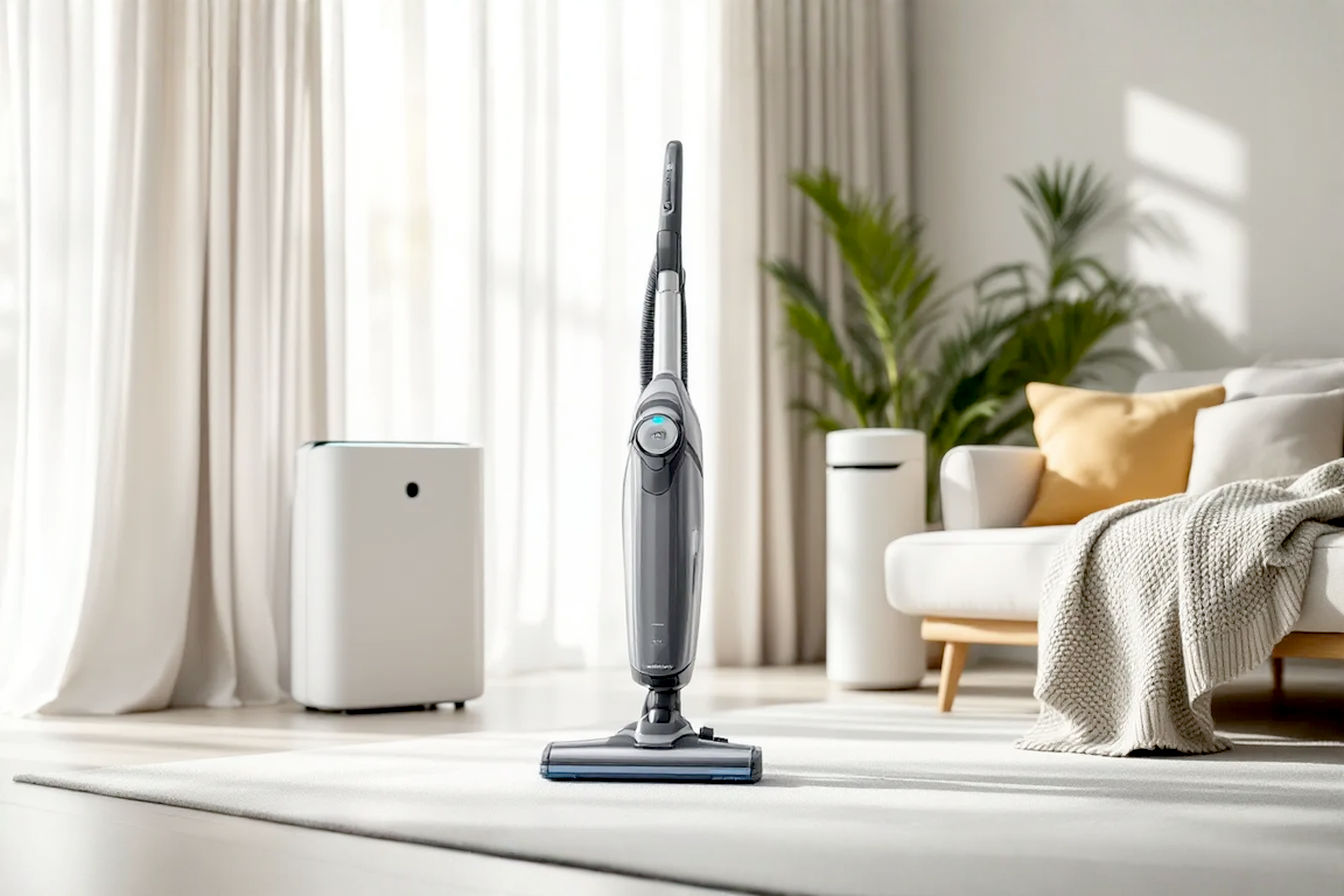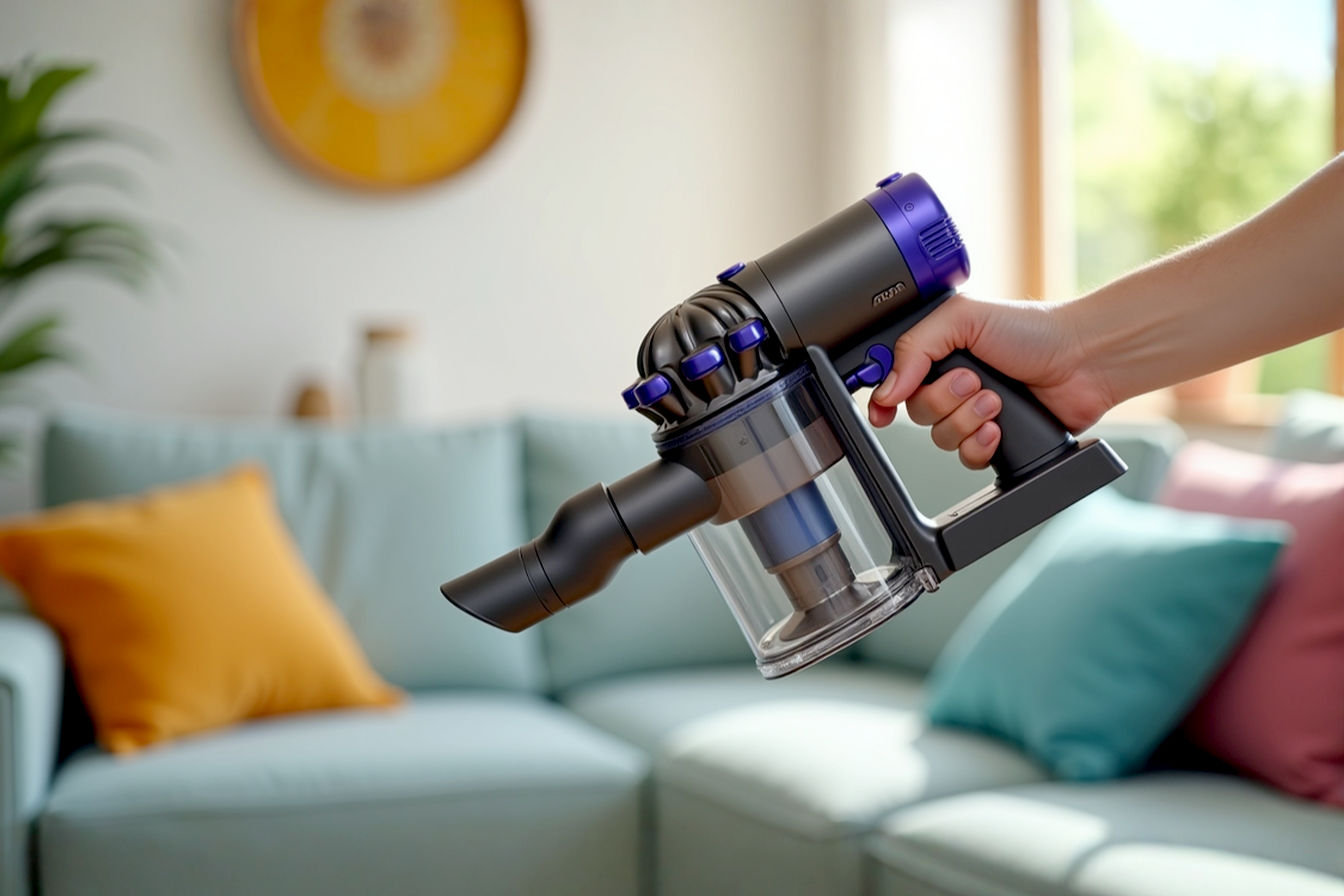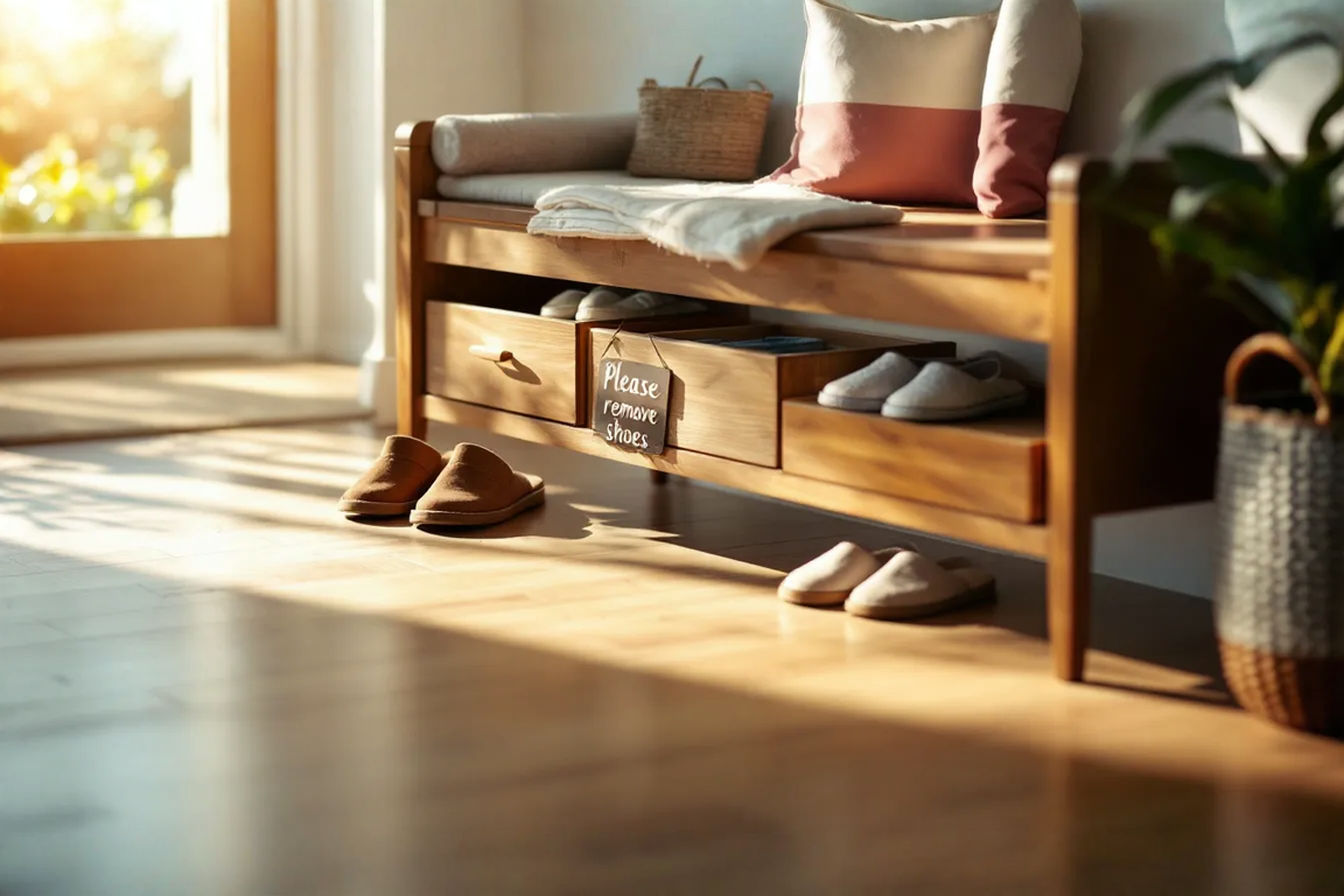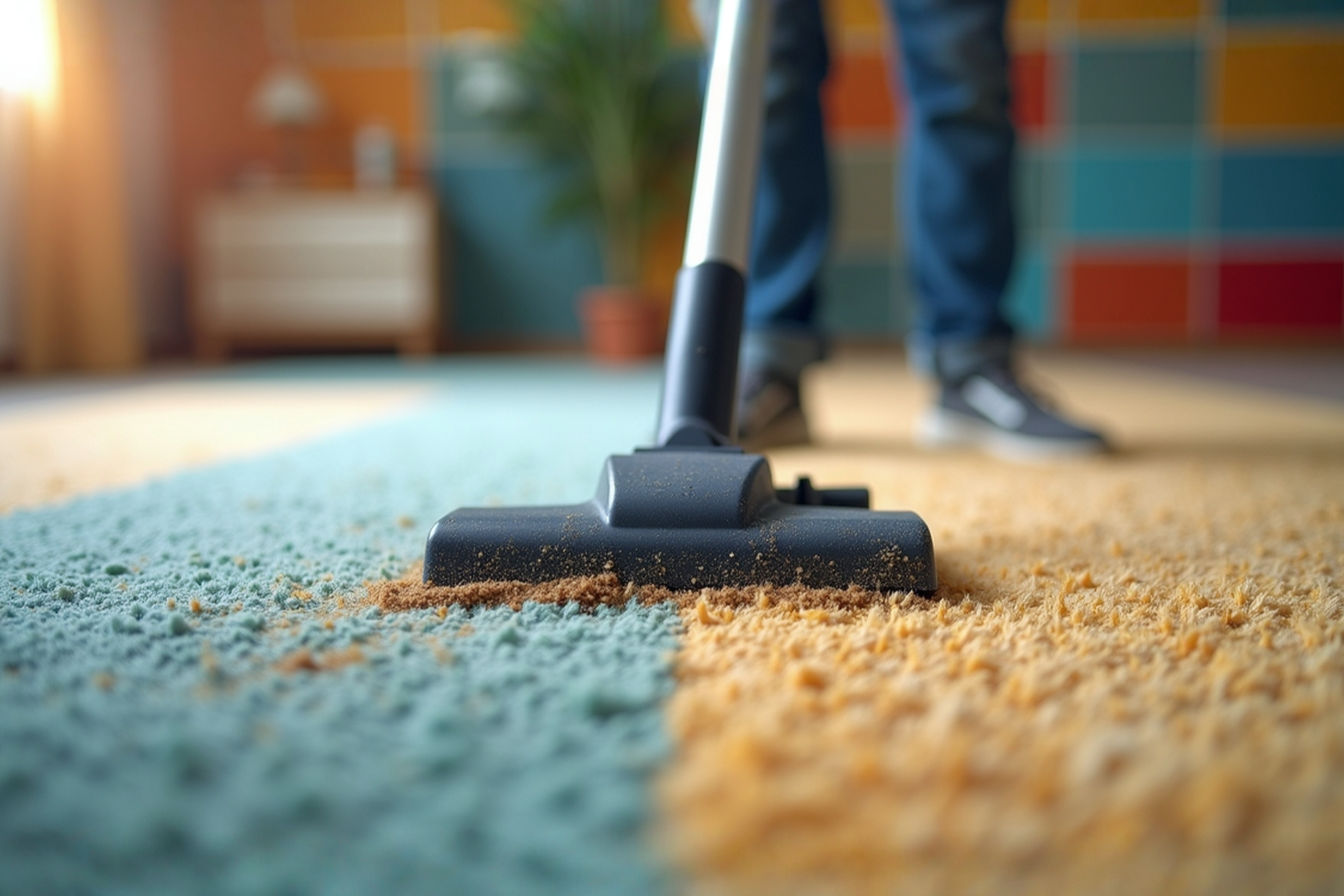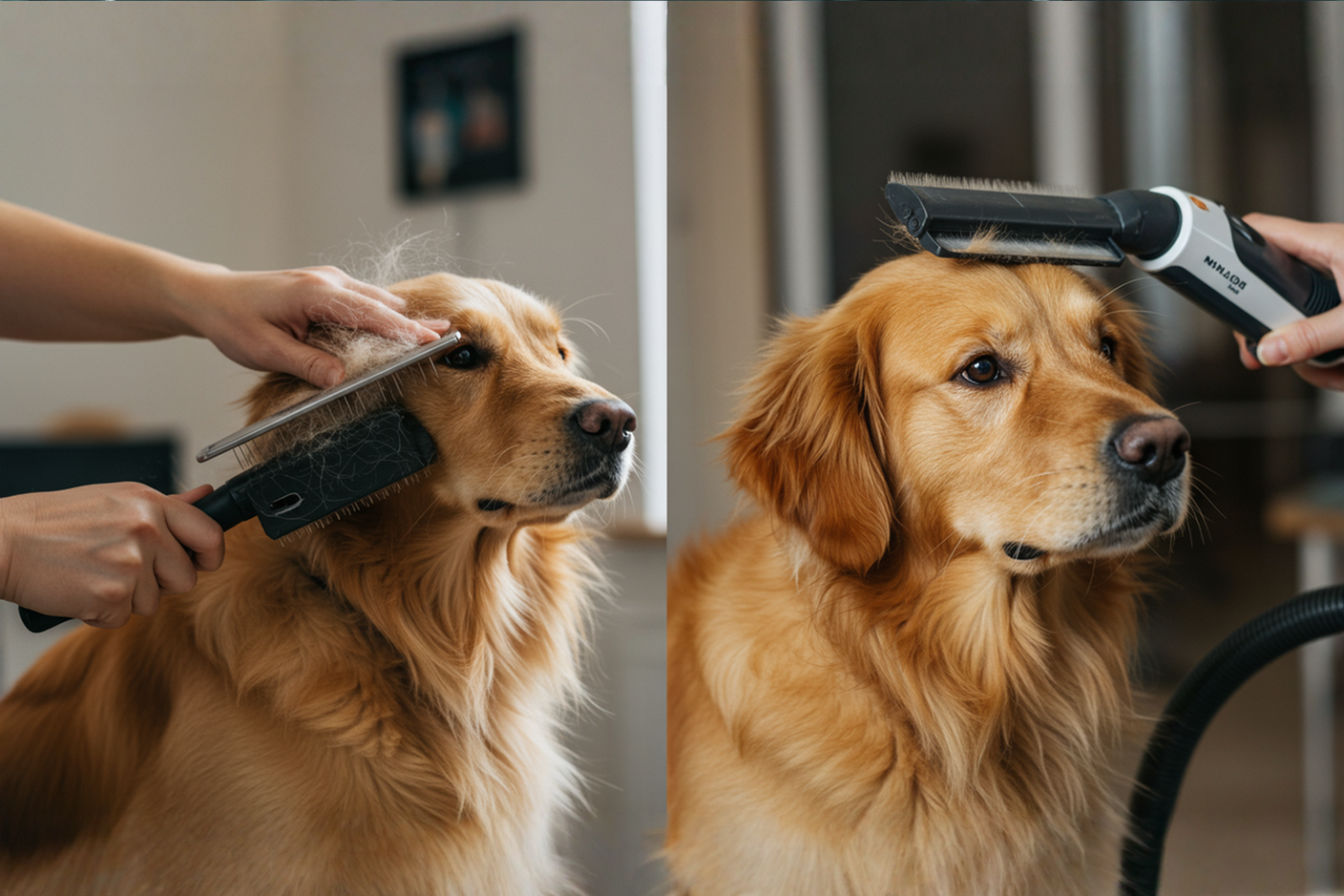Entryway Debris Management: Preventing Dirt Before Vacuuming Becomes Necessary
Learn how to implement a three-zone defense against tracked-in dirt using proven strategies from cleaning experts. Transform your entryway into an effective barrier that stops debris before it spreads throughout your home.
This post may contain affiliate links. If you make a purchase through these links, we may earn a commission at no additional cost to you.
Did you know that up to 80% of the dirt in your home enters through your doors? Each time someone steps into your house, they bring along tiny hitchhikers—dirt, pollen, salt, pesticides, and other debris that eventually spread throughout your living spaces. The average person tracks in about 0.06 grams of dirt with each step when entering from outdoors. While that might not sound like much, it adds up quickly in a busy household.
This invisible invasion doesn’t just create unsightly floors—it impacts your indoor air quality, increases your cleaning workload, and even affects the longevity of your flooring and furnishings. Most homeowners find themselves in a constant battle against this infiltration, with the average American spending 5-6 hours weekly on cleaning tasks, much of which involves dealing with tracked-in debris.
But what if you could significantly reduce this problem before it spreads throughout your home? That’s where strategic entryway debris management comes in.
This comprehensive guide will walk you through a complete system for minimizing the dirt that makes it past your threshold. We’ll explore proven strategies that range from simple, budget-friendly solutions to sophisticated systems used in commercial buildings but adapted for residential use. By implementing these approaches, you’ll reduce your cleaning time and create a healthier indoor environment.
Understanding Entryway Debris Sources
Before tackling any problem, it’s important to understand exactly what you’re dealing with. The debris entering your home isn’t just visually unappealing—it’s a complex mixture that varies by season, location, and household activity.
Common types of entryway debris include:
- Soil particles (ranging from coarse sand to fine clay)
- Organic matter (leaves, grass clippings, plant material)
- Road treatments (salt, sand, de-icing chemicals)
- Pollutants (vehicle emissions residue, pesticides, fertilizers)
- Biological material (pollen, mold spores, bacteria)
- Household-specific debris (pet hair, construction dust)
Research from the University of Arizona found that shoe soles can harbor, on average, 421,000 bacteria units, including E. coli and other potentially harmful organisms. Meanwhile, a study published in Environmental Science & Technology discovered that shoes regularly pick up lawn pesticides that can persist in your home for up to a week after application.
Seasonal Variations
The debris challenge changes dramatically throughout the year:
- Spring brings pollen, mud, and lawn treatment chemicals
- Summer introduces grass clippings, sand, and increased organic matter
- Fall delivers leaves, plant debris, and early moisture
- Winter creates the perfect storm of salt, sand, snow-melt chemicals, and mud
Urban vs. Rural Differences
Your location significantly impacts the type of debris you’re fighting:
Urban environments typically introduce more industrial pollutants, fine dust from vehicle brakes, tire particles, and various chemical residues from roadways and public spaces. City dwellers often deal with higher concentrations of potentially harmful particulates that can affect indoor air quality.
Rural settings generally mean more natural materials—soil, plant matter, pollen, and agricultural residues. While these might seem more benign, they can still harbor bacteria, mold spores, and allergens that impact your home’s cleanliness.
Hidden Impacts
The problem extends beyond just dirty floors. When tracked-in debris isn’t managed effectively:
- Indoor air quality suffers as particles become airborne during normal household activities
- Cross-contamination occurs between rooms
- Flooring wears prematurely as abrasive particles act like sandpaper with each footstep
- Cleaning products and equipment wear out faster from excessive use
- Allergen levels increase throughout the home
A study from the National Institute of Environmental Health Sciences found that effective entryway systems can reduce indoor particulate matter by up to 60%, significantly improving indoor air quality.
Foundational Principles of Entryway Debris Management
The Three-Zone Defense Concept
Professional facility managers have long relied on a systematic approach to entryway debris management. This three-zone defense system can be adapted perfectly for residential use, creating a comprehensive barrier against unwanted debris.
Zone 1: Outdoor Defense The first line of defense occurs before anyone even reaches your door. This zone focuses on removing the largest and most abrasive debris particles.
Zone 2: Transition Area This critical zone bridges the outdoor and indoor environments, typically consisting of a vestibule, covered porch, or mudroom where further debris removal occurs.
Zone 3: Indoor Protection The final defensive layer captures any remaining fine particles and provides organization for shoes and outerwear to prevent cross-contamination.
Primary vs. Secondary Entrances
Not all entryways are created equal. Most homes have multiple entry points, each with different traffic patterns and debris challenges:
Primary entrances (typically the front door) require formal, aesthetically pleasing solutions that maintain your home’s curb appeal while still providing effective debris control.
Secondary entrances (often side or back doors) usually experience heavier, more casual use and may require more robust, utilitarian systems. According to home organization experts, 70-80% of daily household traffic often comes through these secondary doors.
Proactive vs. Reactive Approaches
Traditional cleaning primarily represents a reactive approach—dealing with dirt after it has already spread throughout your home. Effective entryway management is fundamentally proactive, stopping dirt at the threshold before it becomes a widespread problem.
A proactive system requires:
- Strategic planning based on your specific home layout and family activities
- Proper infrastructure at each entry point
- Consistent habits from all household members
- Seasonal adjustments to address changing conditions
When implemented correctly, this approach can reduce indoor cleaning requirements by up to 70% according to research from the Cleaning Industry Research Institute.
Outdoor Solutions: The First Line of Defense
Your defense against tracked-in debris begins well before anyone reaches your door. Thoughtful outdoor planning can dramatically reduce the amount of material that makes it to your threshold.
Strategic Landscaping
The ground immediately surrounding your entrances plays a crucial role in debris management:
- Install 5-10 feet of hard surface pathways (concrete, pavers, or gravel) leading to all entrances to reduce soil transfer
- Position plantings at least 2-3 feet from walkways to minimize soil splash and plant debris
- Choose low-maintenance, low-debris landscaping near entrances (avoid plants with excessive leaf drop, pollen, or fruit)
- Use mulch barriers between lawns and walkways to create clean transitions
Technical detail: For optimal performance, pathways should have a slight grade (1-2%) away from the house foundation and utilize materials with a smooth but not slippery texture. Permeable paving systems can reduce mud formation by allowing water to drain through the surface rather than pooling.
Hardscaping Considerations
The built environment around your entrance can either help or hinder your debris management efforts:
- Covered entryways reduce moisture and debris accumulation by up to 50%
- Proper drainage prevents mud formation and water tracking
- Lighting ensures visibility for proper footwear cleaning, especially important during evening hours
- Seating options near busy entrances encourage shoe removal
For homes in regions with significant precipitation, extending roof overhangs to cover at least 4-5 feet of the approach to your door can dramatically reduce water-related debris.
Outdoor Mats and Grates
The first physical defense system should be an outdoor mat or grate designed specifically for initial debris removal:
Scraper mats with raised patterns or bristles actively remove larger debris particles. Look for:
- Weather-resistant materials (recycled rubber, polypropylene, coconut coir)
- Open designs that allow debris to fall through rather than accumulate
- Proper sizing (covering the full stride width plus 6-12 inches)
Commercial-grade grates offer superior performance for homes in extreme environments:
- Recessed grate systems can collect significant debris without creating a tripping hazard
- Modular systems allow for customization to your specific entrance dimensions
- Materials like galvanized steel or aluminum provide durability in harsh conditions
Best practice: The recommended size for outdoor mats is a minimum of 4×6 feet—large enough to ensure that both feet contact the mat at least once, even if someone is walking at an angle.
Boot Scrapers and Cleaning Stations
For high-debris environments, dedicated cleaning tools make a tremendous difference:
- Fixed boot scrapers mounted near entrances remove caked-on mud and debris
- Boot brushes with side bristles clean the edges and soles of footwear
- Modular cleaning stations combine scrapers, brushes, and collection trays
For rural properties or homes where outdoor activities are common, consider a complete boot washing station with:
- Water source (hose connection or simple foot pump)
- Drainage system
- Non-slip standing surface
- Storage for cleaning tools
These stations are particularly valuable for homes with active children in sports, gardening enthusiasts, or those with agricultural activities.
Transition Zone Solutions
The transition zone bridges your outdoor and indoor spaces, providing a critical opportunity to capture debris before it enters your living areas. Whether you have a dedicated mudroom or just a small landing area, maximizing this space pays significant dividends.
Vestibules and Mudrooms
A properly designed transition area serves as both a functional space and a psychological cue that prompts behavior change:
- Physical separation from main living areas contains debris
- Adequate size accommodates multiple family members simultaneously (minimum 4×6 feet for small households)
- Durable, easy-clean surfaces withstand heavy use and moisture
- Proper ventilation helps dry wet items and prevents mold/mildew
Design tip: Flooring in transition zones should be water-resistant, easy to clean, and preferably darker in color to hide debris between cleanings. Options like luxury vinyl tile, ceramic tile, or sealed concrete provide ideal performance.
High-Performance Entrance Matting Systems
The transition zone should include specialized matting that captures both moisture and fine particles:
Dual-action mats combine scraping and absorption functions:
- Top layer removes remaining larger particles
- Bottom layer absorbs moisture and traps fine debris
- Materials like microfiber or olefin provide superior performance
Waterhog-style mats feature:
- Water dam borders that contain moisture
- Raised patterns that both scrape and trap debris
- Quick-drying properties to prevent mildew
Technical consideration: Commercial buildings typically use a minimum of 12-15 feet of combined matting systems to remove up to 85% of debris. While this length isn’t practical for most homes, using multiple mats in sequence (outdoor scraper, transition combination mat, indoor wiper) creates a similar effect in a smaller footprint.
For maximum effectiveness, transition zone mats should:
- Cover the width of the entry completely
- Extend at least 4-6 feet into the space
- Be secured to prevent slipping or bunching
- Feature beveled edges to minimize tripping hazards
Shoe Removal Stations
Creating a dedicated area for footwear removal dramatically reduces debris transfer:
- Seating encourages proper shoe removal (bench, chair, or fold-down options for small spaces)
- Visible shoe storage prompts consistent use
- Convenient tools like shoe horns and boot jacks make the process easier
- House slipper options encourage complete transition from outdoor to indoor footwear
Cultural insight: Many cultures with traditionally cleaner homes (Japanese, Scandinavian, Korean) have longstanding practices of complete shoe removal at the entrance. Adopting this practice can reduce indoor contaminants by 85-90% according to environmental health studies.
Storage Solutions for Weather Gear
Effective storage prevents cross-contamination from outerwear to your living spaces:
- Designated hooks at multiple heights accommodate various family members
- Drip trays contain moisture from wet items
- Open storage systems promote air circulation and drying
- Machine-washable bins provide easily cleaned storage for smaller items
For families with children, creating individual “stations” with personal storage for each family member increases compliance and organization.
Indoor Defense Systems
Even with excellent outdoor and transition defenses, some debris will inevitably make it into your home. The indoor defense layer captures these remaining particles while providing organization for shoes and quick cleanup options.
Indoor Mat Selection and Placement
Indoor mats serve as your final filtration system:
- Microfiber or wool materials provide superior fine particle capture
- Low-profile designs prevent tripping while allowing doors to open freely
- Machine-washable options simplify maintenance
- Strategic placement at interior doorways prevents cross-contamination between rooms
Performance tip: Studies show that indoor mats with multiple textures and colors hide debris better between cleanings while still performing effectively. Consider patterns that complement your decor while disguising day-to-day particulate accumulation.
For maximum effectiveness, indoor mats should:
- Extend at least 3-4 feet into the room
- Cover high-traffic transition points between different flooring types
- Be replaced or deep-cleaned quarterly
Shoe Storage and Organization
Proper indoor shoe management prevents debris from spreading:
- Enclosed cabinets contain dust and odors from shoes
- Designated clean/dirty areas separate outdoor footwear from indoor-only shoes
- Vertical storage systems maximize space efficiency in smaller homes
- Seasonal rotation systems reduce entryway clutter
Space-saving solution: Wall-mounted shoe organizers can hold 6-8 pairs of shoes while occupying minimal floor space—ideal for apartments or smaller homes.
Specialized Flooring Options
The flooring in your entryway area can actively contribute to your debris management system:
- Textured tile captures fine particles while remaining easy to clean
- Patterned flooring visually disguises debris between cleanings
- Modular systems allow for replacement of high-wear sections
- Specialized treatments like antimicrobial sealants reduce bacterial growth
For renovations or new construction, consider recessed matting systems that create a seamless transition while providing superior debris capture capabilities.
Quick-Clean Tools for Immediate Management
Keep simple cleaning tools accessible for immediate debris management:
- Cordless stick vacuum for quick spot cleaning
- Microfiber dust mop for daily touch-ups
- Boot brush for removing debris from footwear
- Hand-held carpet sweeper for capturing visible debris
Efficiency tip: Storing these tools within arm’s reach of the entryway increases the likelihood of immediate use, preventing debris from spreading further into the home.
Specialized Solutions for Unique Challenges
Different households face unique debris management challenges. These specialized approaches address specific situations that require tailored solutions.
Pet-Related Debris Management
Pets introduce distinct challenges to entryway cleanliness:
- Paw cleaning stations with absorbent microfiber mats and gentle cleaning wipes
- Dedicated pet entry points with specialized cleaning tools
- Grooming areas near secondary entrances for post-walk brushing
- Air purification systems that specifically address pet dander
Innovative solution: “Paw plunger” devices use soft bristles and water to clean pet paws thoroughly after walks, dramatically reducing tracked-in debris from four-legged family members.
For homes with multiple pets, establishing a dedicated pet entry area with easily cleanable surfaces and specialized tools can reduce pet-related debris by up to 70%.
Children and Sports Equipment
Active families require robust systems:
- Dedicated “dirty gear” zones with washable surfaces
- Age-appropriate storage at accessible heights
- Visual cues that remind children of proper entry procedures
- Equipment-specific solutions like boot dryers, helmet hooks, and ball corrals
Practical approach: Creating photo-based checklists of entry procedures helps young children develop consistent habits for removing and storing footwear and outerwear properly.
Seasonal Adaptations
Your entryway system should evolve with changing seasons:
Winter strategies:
- Extend outdoor coverage
- Add extra absorbent mats
- Provide dedicated storage for winter gear
- Consider boot dryers for snowy regions
Spring approaches:
- Focus on pollen capture
- Increase mat washing frequency
- Address mud with specialized scrapers
- Add umbrella stands and wet gear storage
Summer solutions:
- Deal with sand and water
- Address increased insect infiltration
- Provide storage for summer recreation gear
- Manage increased cooling system efficiency
Fall preparations:
- Focus on leaf and plant debris
- Address early moisture challenges
- Prepare for temperature fluctuations
- Transition to heavier gear storage
Technical consideration: Winter presents the greatest challenge for most regions, with studies showing up to a 38% increase in tracked-in debris during winter months. This season requires the most robust and comprehensive approach to entryway management.
Accessibility Considerations
Effective debris management must work for all family members and visitors:
- Zero-threshold entries with excellent drainage
- Seated shoe removal options for those with mobility challenges
- Lever-style door handles for easier operation while carrying items
- Contrasting colors for improved visibility of elevation changes
Universal design principle: Systems that work well for those with accessibility needs typically work better for everyone, creating more user-friendly environments across the board.
Small-Space Entryway Solutions
Limited space requires creative approaches:
- Vertical storage systems that maximize wall space
- Multi-functional furniture (storage benches, wall-mounted drop zones)
- Folding or nested components that can be expanded as needed
- Strategic use of corners and typically underutilized spaces
Space-saving tip: In extremely tight entryways, consider using the backside of the entry door for storage with over-door organizers or hooks, creating valuable storage without consuming floor space.
Maintenance Systems and Routines
Even the best-designed entryway management system requires regular maintenance to function optimally. Establishing consistent routines ensures continuous protection against debris infiltration.
Daily, Weekly, and Seasonal Maintenance
Daily tasks:
- Shake out or vacuum exterior mats
- Empty debris collection systems
- Wipe down high-touch surfaces
- Return items to proper storage locations
Weekly maintenance:
- Vacuum or wash interior mats
- Clean shoe storage areas
- Wipe down vertical surfaces
- Check and clean tools and equipment
Monthly attention:
- Deep clean all mats
- Inspect and repair any damaged components
- Clean less-used storage areas
- Assess system performance and make adjustments
Seasonal overhaul:
- Thoroughly clean and inspect all components
- Replace worn or damaged items
- Reorganize for upcoming seasonal needs
- Deep clean all surfaces including walls and ceilings
Efficiency tip: Research shows that consistent small maintenance tasks (2-3 minutes daily) dramatically outperform infrequent deep cleaning in keeping entryway debris under control.
Tools and Equipment for Entryway Cleaning
The right tools make maintenance significantly easier:
- Entryway-specific vacuum with appropriate attachments for mats and corners
- Microfiber cleaning cloths that capture fine particles without chemicals
- Specialized mat cleaning tools for deep cleaning without removal
- Gentle cleaning solutions that won’t damage materials or leave residue
Technical consideration: For homes with heavy foot traffic, consider investing in a dedicated entryway vacuum with HEPA filtration that can capture fine particles without redistributing them into the air.
Professional vs. DIY Maintenance Approaches
While daily maintenance can be handled easily by homeowners, periodic professional services can extend the life of your system:
- Professional mat cleaning (2-4 times annually) removes embedded debris that household methods miss
- Flooring resealing protects surfaces from wear and improves debris resistance
- System assessment by organization experts can identify improvement opportunities
- Deep cleaning services for carpets and textiles beyond the entryway
The combination of consistent DIY maintenance with periodic professional service provides optimal long-term performance.
Developing Family Habits and Protocols
The most sophisticated system fails without consistent user compliance:
- Create visual reminders for new habits (signs, labels, instructional images)
- Establish clear expectations for all household members
- Remove barriers to compliance by making the system simple and intuitive
- Recognize and reinforce positive behaviors, especially with children
Behavior change tip: It takes approximately 66 days to form a new habit, according to research from University College London. Maintain consistency with new entryway protocols for at least two months to establish permanent behavior patterns.
Measuring Success and Optimizing Your System
How do you know if your entryway debris management system is working? Measuring outcomes helps you refine your approach for optimal results.
Evaluating Reduction in Indoor Dirt
Several methods can help quantify your progress:
- Before/after comparisons of cleaning frequency and duration
- Debris collection measurement from vacuum canisters or cleaning tools
- White sock test (walking through the house in white socks and examining soil accumulation)
- Surface wipe testing using white cloths on various surfaces
A comprehensive system should reduce visible debris by 70-85% and cleaning frequency by 30-50%.
Tracking Cleaning Frequency Changes
Record keeping helps identify improvements:
- Log cleaning activities and time spent
- Note areas requiring frequent attention
- Track seasonal variations in debris accumulation
- Document system changes and resulting impacts
This data-driven approach allows for continuous improvement of your system.
Air Quality Measurements
Beyond visible debris, improved air quality indicates success:
- Reduced dust accumulation on surfaces throughout the home
- Decreased HVAC filter debris collection
- Lower particulate readings on home air quality monitors
- Reduced allergy symptoms among household members
Studies show that effective entryway systems can reduce airborne particulate matter by 25-40% throughout the home.
Adjusting Your Approach Based on Results
Entryway management is an iterative process:
- Address problem areas identified through measurement
- Upgrade components that show signs of wear or inadequate performance
- Simplify complicated processes that family members consistently bypass
- Adapt to changing household needs as family composition evolves
The most effective systems grow and change with your household.
Conclusion
Effective entryway debris management represents a fundamental shift from reactive cleaning to proactive prevention. By implementing a comprehensive system that addresses outdoor, transition, and indoor zones, you’ll dramatically reduce the amount of dirt, allergens, and contaminants that make their way into your living spaces.
The benefits extend far beyond cleaner floors:
- Healthier indoor air quality with fewer allergens and particulates
- Reduced cleaning time and effort throughout your entire home
- Extended lifespan for flooring and furnishings
- Lower cleaning supply costs due to reduced usage
- Improved home organization and function
Remember that the perfect system varies for each household based on specific needs, layout, and lifestyle. The most important factor is consistency—even a simple system used faithfully will outperform a sophisticated one that’s regularly bypassed.
By investing time and resources in your entryway defense strategy, you’ll create a healthier, cleaner home environment while simultaneously reducing the time and effort spent on cleaning. When it comes to home cleanliness, the old adage holds true: an ounce of prevention truly is worth a pound of cure—or in this case, worth countless hours of vacuuming.

